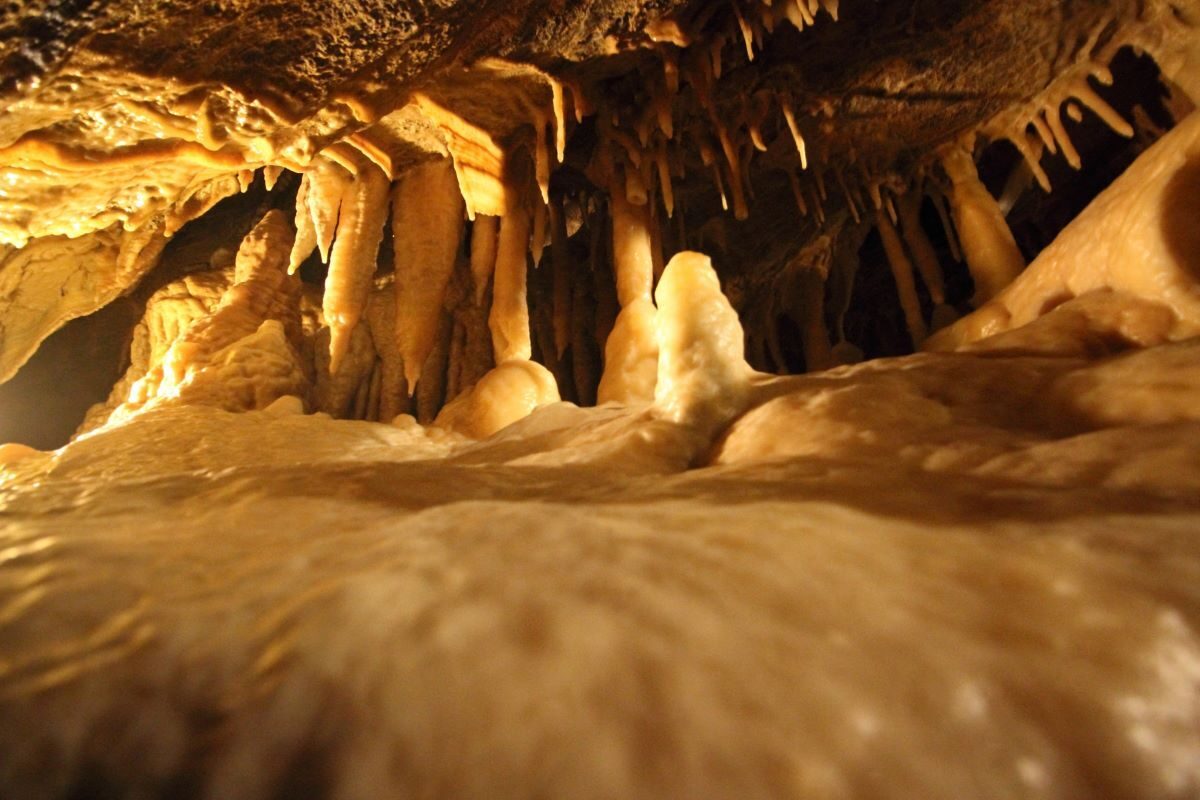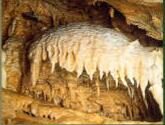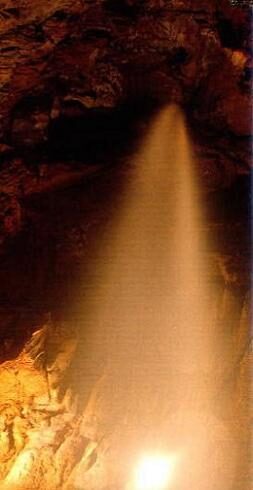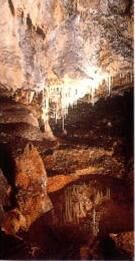Mount Ryugashi lies 3km north-coast of Lake Hamana. Legend says there’s a rock near the top of this mountain with the claw marks of a dragon (‘Ryugashi’ means ‘dragon’s rock’)- Below, extending 1000m into the south face of the Ryugashi mountain (elevation 359 meters), is another mysterious and magical place – ‘Ryugashido’, the biggest limestone cave in the Tokai district.

Located in the Chichibu fossil layer, it is an incredible 250 million years old. About 400m of the cave is open to the public, who can wonder at its intricate limestone formations, glimmering waterfalls and pools, and ancient cave-dwelling creatures. Special lighting and music heightens this unique experience for our many visitors.

Limestone caves are formed when underground water (which contains carbon dioxide), runs through a cave and dissolves limestone rock (mainly composed of calcium carbonate). This water drips from the ceiling of the cave where it mixes with air and evaporates, leaving behind calcium deposits.
Over tens of thousands of years, these deposits accumulate and create stalactites (hanging from the cave ceiling), stalagmites (standing on the cave floor), and others. The process is extremely slow – they will grow at a rate of only about 1cm every 100 years.

The formation of Ryugashido continues today, through the tide of time just as it did in ancient eras. The year-round temperature in the cavern averages 18C, so you can enjoy this underground spectacle in comfort.



Figure: waterfall climb of the jellyfish, treasure pillars, anchorite
History of Ryugashi Cave (Ryugashi-do Cavern): Hidden from the world for 250 million years, this underground mystery has now been revealed.
In lnasa town near, Himamatsu.on the south face of Mt. Ryugashi (359m) there is a cave known to the local people since the Taisho period (1912-1926). The land in this district WAS formed during the so-called “Chichibu” fossil layer of ancient limestone rock.

In the old days, bats would fly in and out of the cave at dusk, so local children would venture into the cave to see them. The children sometimes noticed a small opening in the cave wall about 10 X 10cm. with a draft of air coming through. Looking into the opening with a flashlight, there seemed to be much more to the cavern.

In June, 1981 Mr Sa-dao Toda started to clean up the cave interior, carting out dirt with a single wheelbarrow.
In October 1981 two amateur spelunkers looked into the cave opening saying, “When we go through this opening, we can find a new cave! So they began to widen the opening. The work was very hard. The temperature of the cave was only 18C. and they had to dig while lying on their backs, in cold mud and underground water, water ran into their sleeves and they were all muddy, but they were always looking forward to the moment when they could enter the cave on the other side.


Figure: golden waterfall and chandelier room
After three days of digging, one man was able to enter the opening, and the other followed after him. Looking up into the cavern with a flashlight, they saw a number of stalactites hanging from the ceiling.
They were so excited about their discovery, crying “Finally we did it!” Looking around the cavern they sighed with satisfaction at their discovery, remembering all their hard work and how close they were to giving up(Later Mr. Toda named this opening the Happiness Window).

In exploring the cave further they had to pass through several more narrow difficult points, but during November they reached the largest cavern. When they discovered the “White Wax” formation their map of the cavern was gradually getting longer and longer as they discovered stalactites in each succeeding room.
The unknown world that had been sleeping under the earth for 250 million years passed before their eyes like a panoramic film. Finally, in December 1981 the spelunkers reached the “Golden Waterfall’. In the narrow space before that, they could hear the faint sound of water. But suddenly entering a huge cavern they felt a misty spray and were surprised to see the huge waterfall tumbling down.
It was entirely unexpected. They forgot all their tiredness and coldness in their amazement at the sight, staring at it with wonder-filled eyes.

The next two and a half years after the discovery of the Golden Waterfall was spent investigating and developing the cave route. The total length of the cave was discovered to be about 1000 meters. Then, in October 1983 the cave was opened to the public.
Visiting Ryugashi Caverns:

The caverns are open daily from 9:00 am to 5:00 pm. General admission for adults is ¥650, but the admission fee is discounted for students and group visits. To reach Ryugashi Caverns by bus, take the #45 bus from Terminal 15 and get off at Ryugashi-do Iriguchi (竜ヶ岩洞入口). The fare is ¥630 and it takes about 1 hour. From the bus stop, you have to walk up the road a little bit to find the entrance to the caverns.
The free information pamphlet comes with an English translation, and some of the signs inside the caves have English as well. Catch Ayu (sweet fish) by Hand at Ryugashido Fish Park
Entrance: Adults ¥650, jr. high school students ¥450, elementary school students ¥350
Hour: 9:00-17:00
Address and Contact:
Ryugashi Cave (Ryugashi-do Cavern) and Museum 193 Inasa town (Inasa-cho), Tabatake, Hamamatsu City (Hamamatsu-shi), Kita ward (Kita-ku), Shizuoka Prefecture 431-2221, Japan Tel: 053-543-0108
Website: http://www.doukutu.co.jp/




